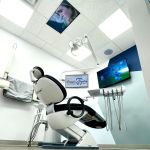- 1-understanding-teeth-shifting-after-braces
- 2-importance-of-retainers-in-preventing-teeth-shifting
- 3-types-of-retainers-and-how-to-use-them
- 4-daily-care-routines-to-maintain-teeth-alignment
- 5-professional-monitoring-and-follow-up-visits
- 6-real-life-case-study-preventing-teeth-shift-after-braces
- 7-additional-tips-to-keep-your-smile-perfect
1. Understanding Teeth Shifting After Braces
After braces are removed, teeth have a natural tendency to shift back towards their original positions. This movement, known as relapse, can happen due to the elasticity of the periodontal ligaments and bone remodeling. Understanding why teeth shift after orthodontic treatment is crucial in learning how to stop teeth from shifting after braces.
Immediate post-braces care is vital because the jaw and gums need time to stabilize around the newly aligned teeth. Without proper retention strategies, even the best orthodontic results may not last.
2. Importance of Retainers in Preventing Teeth Shifting
Retainers are the cornerstone of maintaining teeth alignment after braces. They hold the teeth in place while the surrounding bone and tissue adapt to the new positions. Wearing retainers as prescribed by your orthodontist is the most effective way to prevent shifting.
Ignoring retainer use can quickly undo months or years of orthodontic work, leading to misalignment, crowding, or gaps. Patients must commit to retainer wear as part of their long-term dental health routine.
3. Types of Retainers and How to Use Them
There are primarily two types of retainers: fixed (bonded) and removable. Fixed retainers are glued behind the teeth, offering continuous support without daily effort, but require diligent cleaning. Removable retainers, such as Hawley or clear plastic ones, must be worn consistently as directed.
Each type has its advantages and is selected based on patient lifestyle, preferences, and orthodontist recommendations. Proper retainer care, including cleaning and storage, ensures effectiveness and longevity.
4. Daily Care Routines to Maintain Teeth Alignment
Besides wearing retainers, maintaining excellent oral hygiene is critical. Regular brushing, flossing, and avoiding habits like nail-biting or chewing hard objects help preserve alignment.
Consuming a balanced diet rich in vitamins supports gum and bone health, contributing to teeth stability. Patients should be mindful of changes in bite or discomfort, addressing them promptly.
5. Professional Monitoring and Follow-Up Visits
Regular dental and orthodontic check-ups allow professionals to monitor retention progress and catch any early signs of shifting. Adjustments to retainers or additional treatments can be made during these visits.
Consistent follow-ups ensure that the smile you achieved with braces remains beautiful and healthy over time.
6. Real-Life Case Study: Preventing Teeth Shift After Braces
Jessica, a patient of Dentistry Toothtruth, shared her experience of nearly losing her perfect smile due to inconsistent retainer use. After recommitting to a strict retainer routine and regular dental visits, she stabilized her teeth and avoided costly retreatment.
Her story emphasizes the importance of discipline and professional guidance in preventing teeth shifting after braces.
7. Additional Tips to Keep Your Smile Perfect
To complement retainer use and care routines, consider:
- Avoiding excessive pressure on teeth from habits like grinding.
- Using mouthguards during sports to protect dental work.
- Staying informed on new orthodontic retention technologies through trusted sources.
For personalized advice and quality dental products, visit Dentistry Toothtruth to support your post-braces dental journey.







 William Farmer, DDS5.0 (5 review)
William Farmer, DDS5.0 (5 review) SimpliSmiles Farmingdale4.0 (386 review)
SimpliSmiles Farmingdale4.0 (386 review) Dr. Hecklin: Family & Cosmetic Dentistry5.0 (316 review)
Dr. Hecklin: Family & Cosmetic Dentistry5.0 (316 review) River Hills Dentistry4.0 (216 review)
River Hills Dentistry4.0 (216 review) Zakhor Dental Group4.0 (146 review)
Zakhor Dental Group4.0 (146 review) Dental Analysis Family Dentistry4.0 (92 review)
Dental Analysis Family Dentistry4.0 (92 review) The Importance of Oral Health Education During Pregnancy for a Healthy Pregnancy
The Importance of Oral Health Education During Pregnancy for a Healthy Pregnancy Best Tips for Brushing Your Teeth Properly for Healthy Gums: Essential Techniques for Oral Health
Best Tips for Brushing Your Teeth Properly for Healthy Gums: Essential Techniques for Oral Health Why Skipping Dental Checkups Can Lead to Bigger Oral Health Problems
Why Skipping Dental Checkups Can Lead to Bigger Oral Health Problems Advantages of Porcelain Dental Restorations
Advantages of Porcelain Dental Restorations How Can Diabetes Cause Tooth and Gum Problems? Preventing and Managing Oral Health Issues
How Can Diabetes Cause Tooth and Gum Problems? Preventing and Managing Oral Health Issues Healthy Habits for Promoting Good Oral Health and Hygiene: Tips for a Healthy Smile
Healthy Habits for Promoting Good Oral Health and Hygiene: Tips for a Healthy Smile